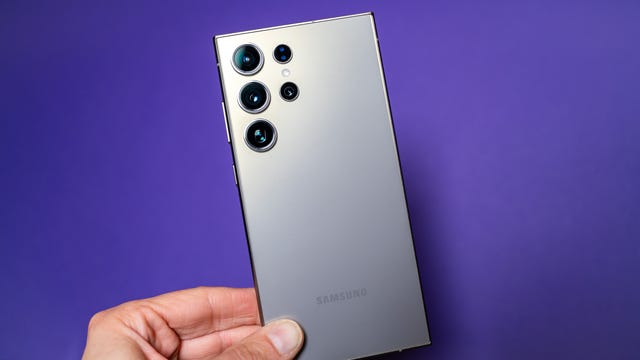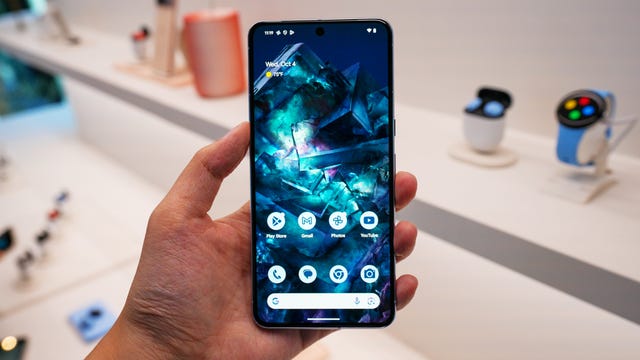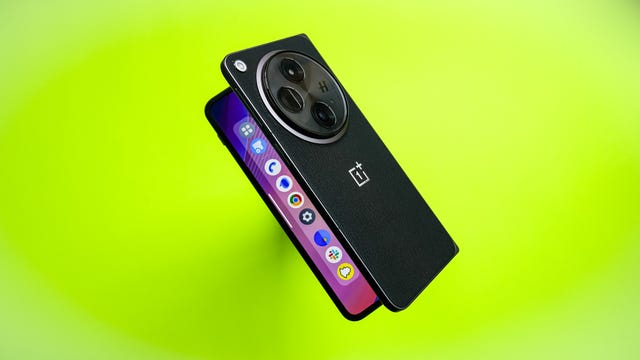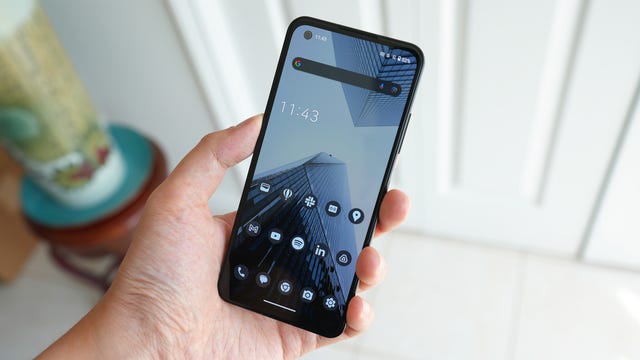






With dozens of smartphones on the market today, it's not always easy to choose the best phone for you -- especially if you prefer Android over iOS. That's why ZDNET's done all the work for you. Over the past year, I've tested and reviewed just about every major smartphone released by Apple, Samsung (including the new Z Fold 6 and Z Flip 6), Google, OnePlus, and others to curate this definitive list of the best handsets available right now.
What is the best phone right now?
After extensive testing of dozens of devices, our pick for the best phone overall is the Samsung Galaxy S24 Ultra, thanks to its immersive and vibrant display, reliable battery life, and wealth of special features, some of which are powered by the company's new generative AI model.
Of course, the best phone overall may not exactly be the best phone for you. Find the rest of our top picks below.
Best phones of 2024
There's no denying that, over the past five years, smartphones have become more and more unwieldy. Apple now offers Plus and Max-sized iPhones, Samsung has an "Ultra" beast, and even Google has a foldable that opens up to 7.6 inches. On the other end of the spectrum sits the Asus Zenfone 10, a device that deviates from the norm in favor of ergonomics and in-hand comfort, and the decision pays off.
Compared to its predecessor, the Asus Zenfone 9, which I called "the iPhone Mini alternative for Android enthusiasts," the newest model features a compact 5.9-inch AMOLED display, all the power you'd need in a modern-day phone thanks to the Qualcomm Snapdragon 8 Gen 2 chipset, and two capable cameras on the rear.
Review: Asus Zenfone 10
The battery life on the Asus holds up surprisingly well, too, with my review unit recording nearly two days of usage before hitting 0%. Some smaller yet significant details to note include the 3.5mm headphone jack on top, a physical side-mounted fingerprint sensor, and a texturized back cover that looks and feels great in the hand. If you're planning to buy the Zenfone 10, multiple Reddit users have suggested to "get the 512GB version because there is no SD card slot," which I fully agree with.
Asus Zenfone 10 specs: Screen size: 5.9 inches | Storage: Up to 512GB | Processor: Qualcomm Snapdragon 8 Gen 2 | Panel type: AMOLED | Color: Black, Blue, Hazel, White, Red | Battery life: 4,300mAh | Water and dust resistant: IP68
What is the best phone?
Our pick for the best phone overall is the Samsung Galaxy S24 Ultra. It features everything you could want from a smartphone including a large display, four cameras that can shoot 200MP photos and 8K video, up to 1TB of storage, a built-in S Pen for writing and drawing, and a 5,000mAh battery powering the system. Here's how the S24 Ultra fares with the rest of our top picks.
| Best phone model | Price | Storage | Screen size | Battery size | Processor |
| Samsung Galaxy S24 Ultra | $1,299 | Up to 1TB | 6.8 inches | 5,000mAh | Qualcomm Snapdragon 8 Gen 3 |
| iPhone 15 Pro Max | $1,099 | Up to 1TB | 6.7 inches | 4,323mAh | A17 Bionic |
| Google Pixel 8 Pro | $999 | Up to 1TB | 6.7 inches | 5,050mAh | Google Tensor G3 |
| OnePlus Open | $1,699 | 512GB | 6.3 inches and 7.8 inches | 5,000mAh | Qualcomm Snapdragon 8 Gen 2 |
| Samsung Galaxy Z Flip 6 | $1,099 | Up to 512GB | 6.7 inches | 4,000mAh | Qualcomm Snapdragon 8 Gen 3 |
| Google Pixel 8a | $499 | Up to 256GB | 6.1 inches | 4,492mAh | Google Tensor G3 |
| OnePlus 12 | $799 | Up to 512GB | 6.8 inches | 5,400mAh | Qualcomm Snapdragon 8 Gen 3 |
| Asus Zenfone 10 | $699 | Up to 512GB | 5.9-inch | 4,300mAh | Qualcomm Snapdragon 8 Gen 2 |
Which is the right phone for you?
Choosing a phone can be a daunting task. But having a list of your must-have features can go a long way toward narrowing down your options. If you're a mobile professional or travel a lot for work, you'll want to choose a phone that can provide you with at least a full day of use on a full battery as well as both LTE and Wi-Fi connectivity.
If you're looking for your teen's first smartphone, a budget-friendly and less feature-heavy option may be better to prevent overspending as well as misuse. And if you're a content creator or other creative professional, you'll want a phone with an excellent front and rear camera to capture photos and videos for your social media feed.
Choose this best phone... | If you want... |
Samsung Galaxy S24 Ultra | A no-compromise smartphone that virtually any type of user can take advantage of. It's the only 2024 smartphone with a built-in stylus. |
iPhone 15 Pro Max | The best iPhone money can buy. It has a large screen, the longest-lasting battery out of all the models, and a toolbox of a camera system. |
Google Pixel 8 Pro | A flagship camera experience at your fingertips. The Pixel 8 Pro differentiates itself with a slew of AI-powered camera tricks like Magic Editor and Best Take. |
OnePlus Open | The best phone-to-tablet foldable that money can buy. And if you're a power user, the multitasking and charging features especially will serve you well. |
Samsung Galaxy Z Flip 6 | A flip-style foldable that's both compact and performant. With a large 3.4-inch external display and improved battery life, this is the foldable to buy for most people. |
Google Pixel 8a | A more budget-friendly smartphone that doesn't compromise on performance and camera quality. The Pixel 8a will also receive seven years of OS updates, keeping it feature-relevant until at least 2031. |
OnePlus 12 | A phone that lasts long and charges from 0% to 100% in just 30 minutes. The OnePlus 12 is quietly good value, too, starting at $799. |
Asus Zenfone 10 | A compact phone that's easy to pocket but doesn't compromise on performance and specs. The Zenfone 10 is also competitively priced, starting at $699. |
Factors to consider when choosing a phone
The process of making our phone selections includes real-world testing and researching about the phones for weeks, consulting with colleagues, industry experts, and analysts who also have hands-on experience with the smartphones, and then selecting the best from all of the available choices.
Ultimately, we weigh in the following aspects when curating this list:
- Design: There's only so much you can do with a slab design, but size differences, material choices, color options, and even the ability to bend a screen in half give shoppers enough diversity to have a preference. That's why we have a recommendation for every form factor.
- Performance: For many, smartphones are the center of our lives, which means the best ones are performant and can handle most, if not all, tasks you throw at them.
- Camera: Arguably the most valuable feature of a smartphone; the consistency and reliability of a camera system can make or break the overall mobile experience. We test every device in broad daylight and in the darkest of nights when finalizing this list.
- Battery: Every option in this guide should last you at least a day of moderate use. We also consider what devices support fast charging and/or wireless charging.
- Value: Price points are noted, but the most important thing with buying a phone is getting your money's worth. With these picks, you can rest assured that you're getting the best bang for your buck.









